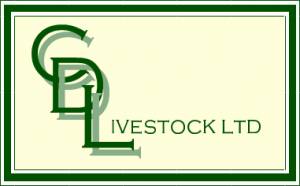Danish Cattle selected for their Health Status
13 May 2011
Chris Dodds Livestock Ltd assists Yorkshire farmer to source replacement Holstein dairy heifers whilst meeting his health status requirements.
Article as written by Farmers Weekly
When buying in replacements it is recommended that buyers seek information of the supplying herd’s health status."Don’t just rely on verbal assurances', says Mr Statham from Bishopton Vets, "as most herds will be monitored either with veterinary supervision or through the many milk recording systems commercially used in the UK"'.
“Where appropriate blood samples can be used ahead of purchase to test for disease. This is not a costly exercise compared with the effect on herd performance and the financial penalties it may incur,” explains Mr Statham.
Those units at greatest risk are often flying herds requiring regular purchase of replacements. Here, risk of importing disease can be cut by working with regular suppliers to agree a health plan and screening programme to keep risk of disease as low as practically possible.
“In all cases producers should question whether they can keep disease out, control it or simply manage it if it is already there,” explains Mr Statham.
Ross Stewart farms 68ha (168ac) plus a further 28ha (70ac) rented ground in conjunction with landlord Tom Ramsden at Horsley Gate Farm, near Ripon, running a 150-head Holstein Friesian herd averaging 9000 litres/cow milk yield.
“We’ve made alterations to buildings that would allow me to expand numbers by 20 head,” explains Mr Stewart.
The herd suffered a BVD breakdown in 2005-6. It impacted on fertility and incurred significant financial costs for both treatment of stock and lost production. “Now I have the chance to increase numbers I wanted to be sure of what I was buying in. Establishing disease status of replacements hasn’t been easy,” he says.
Working with Bishopton Vets’ Jonathan Statham the herd has established a disease monitoring and management programme. “The herd is IBR negative, lepto negative, has no clinical signs of Johnes and no neospora. Stock is vaccinated against BVD and in 2010 all heifers where found to be clear,” explains Mr Statham.
Sourcing replacements has seen many telephone calls made and some visits undertaken to collect blood samples. Even in herds declared clear of IBR and lepto other worrying disease risks have arisen, he adds. “This has included a high risk of neospora and/or BVD - both which we wish to avoid.”
It has been a frustrating search over the past 18 months, says Mr Stewart. “Contact usually ends after the results come back. While I’d like to source stock from the UK it is proving impossible.”
Instead the farm business with Bishopton Vets’ support is looking to Denmark. Screening for Johnes, IBR-free status and the ability to screen for other disease is helping Mr Stewart protect herd health. “When you take into account the potential losses from a breakdown it outweighs the extra income from the extra 20 head I’m looking for.
“After the BVD breakdown in 2005-6 I’d sooner do without than risk the existing herd.”
At current the sterling:euro exchange rate heifers - accounting for screening costs which include an £80 test for Neospora - will cost £1630/head, on a par if not cheaper than UK sourced stock.
It’s been a long journey to select suitable replacements and there is still some way to go, adds Mr Statham. “Ross has invested in herd health and the farm itself has good natural boundaries including a main road and arable neighbours that help keep animal disease risk low.
“He doesn’t want to jeopardise the work to date buy buying in replacements with an unknown disease status. It’s just a pity we cannot find apparently what he’s looking for from UK suppliers,” he adds.

